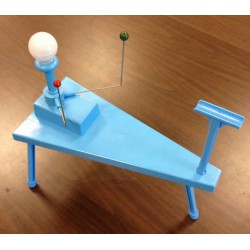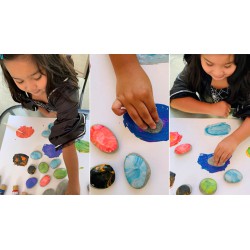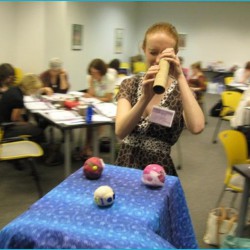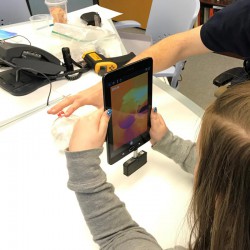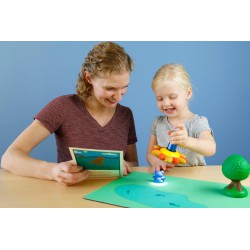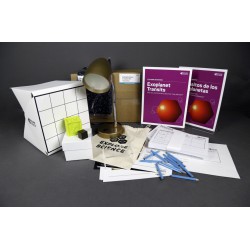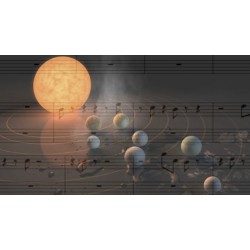Discover Exoplanets There are 12 items.
Our solar system isn’t the only one out there. This collection is centered around STAR Net’s Discover Exoplanets collection. Patrons create their own exoplanet, learn about the characteristics of life, and discover how exoplanets are found.
-
Kepler Mission: Table-top Models
Explore a series of table-top models, some ready-made and others you can build, demonstrating the principle of how Kepler will find extrasolar planets by the transit method. 0
Check It Out
-
Make Your Own Exoplanets
In this STEAM activity, patrons make their own exoplanets using rocks, acrylic paint, popsicle sticks, and craft paper. 0
Check It Out
-
Searching for Life
Participants learn about the characteristics of life and conduct an experiment, searching for life in different soil samples. 0
Check It Out
How-to Video Implementation Guide Provides extensive background information, facilitation outline, materials shopping list, extended supporting media suggestions, correlations to national standards, and more. -
Strange New Planet
4 Review(s)In this simulation of space exploration, participants plan and carry out five missions to a “planet” and communicate their discoveries to their family or a friend. 26016
Check It Out
How-to Video Teacher's Guide Provides classroom connections, key concepts, connections to science standards, and additional resources. -
Investigating the Insides
Investigate the composition of unseen materials, using a variety of tools, as an analogy to how scientists discover clues about the interiors of planets using spacecraft. 0
Check It Out
How-to Video -
Exploring Earth: Bear's Shadow
In this hands-on activity designed for younger visitors and their families, participants move a flashlight around an object to make and experiment with shadows. Connect the activity to a storybook about a little bear exploring his shadow! 0
Check It Out
How-to Video Implementation Guide Provides extensive background information, facilitation outline, materials shopping list, extended supporting media suggestions, correlations to national standards, and more. -
Filtered Light
Use colored filters with art supplies like astromers use filters to study the universe. 0
Check It Out
How-to Video -
Exploring the Universe: Imagining Life
Patrons imagine extreme environments that may exist beyond Earth and create life forms that could thrive there. 0
Check It Out
How-to Video -
Exploring the Universe: Exoplanet Transits
Patrons model a method to search for exoplanets by using a lightbox and mystery objects. 0
Check It Out
How-to Video -
Art and the Cosmic Connection
3 Review(s)Using NASA imagery, participants use images as inspiration for artwork while learning about geology of planetary bodies and moons 8817
Check It Out
How-to Video -
Make Your Own TRAPPIST-1 Music
The Spitzer Space Telescope revealed that there's a pattern to the way the planets move around the TRAPPIST-1 star. When this pattern is set to music, they can portray a beautiful melody! Try taking the transit notes and add your own music to them, then share your creation on social media with #MyTrappist1. 0
Check It Out
-
NASA's Space Jam
Learners with no prior coding experience can explore how to use computers to create and animate solar systems and then use them as a musical instrument! This scaffolded set of activities allow participants to use computer science to understand our universe and to create music based on astronomical data. 0
Check It Out


